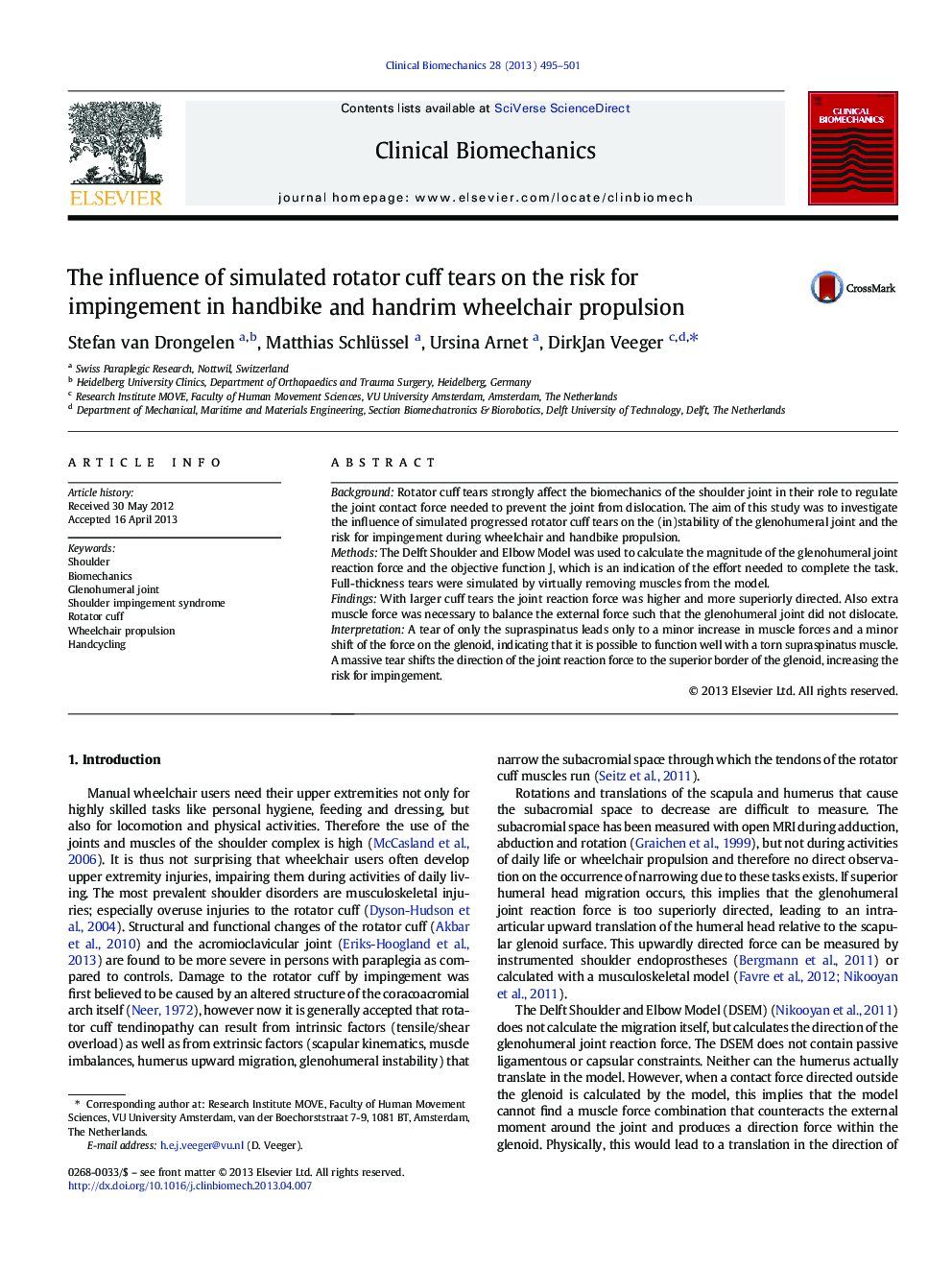| Article ID | Journal | Published Year | Pages | File Type |
|---|---|---|---|---|
| 4050694 | Clinical Biomechanics | 2013 | 7 Pages |
BackgroundRotator cuff tears strongly affect the biomechanics of the shoulder joint in their role to regulate the joint contact force needed to prevent the joint from dislocation. The aim of this study was to investigate the influence of simulated progressed rotator cuff tears on the (in)stability of the glenohumeral joint and the risk for impingement during wheelchair and handbike propulsion.MethodsThe Delft Shoulder and Elbow Model was used to calculate the magnitude of the glenohumeral joint reaction force and the objective function J, which is an indication of the effort needed to complete the task. Full-thickness tears were simulated by virtually removing muscles from the model.FindingsWith larger cuff tears the joint reaction force was higher and more superiorly directed. Also extra muscle force was necessary to balance the external force such that the glenohumeral joint did not dislocate.InterpretationA tear of only the supraspinatus leads only to a minor increase in muscle forces and a minor shift of the force on the glenoid, indicating that it is possible to function well with a torn supraspinatus muscle. A massive tear shifts the direction of the joint reaction force to the superior border of the glenoid, increasing the risk for impingement.
